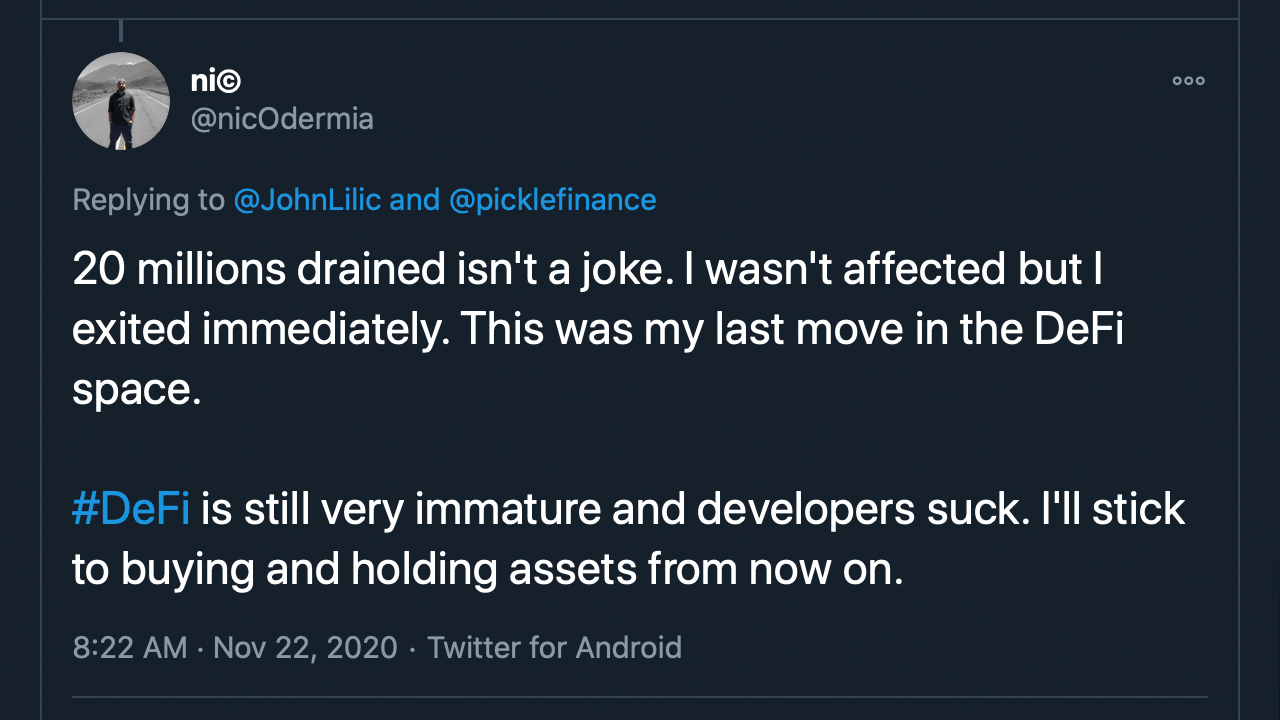Decentralized finance otherwise known as defi has climbed significantly in value this year, as the total value locked (TVL) in defi today is over $14 billion. Meanwhile, numerous defi platforms are getting attacked with flash loans and there are so many new defi projects, it’s hard to keep track of them all. Moreover, while many defi supporters claim these platforms offer greater privacy, examples now show that most everything can be seen onchain connecting ethereum addresses to identities and companies.
Exploits and Flash Loans Are Becoming Commonplace in the Land of Decentralized Finance
In 2020, defi exploded and there’s billions of dollars sitting in a myriad of platforms and applications today offering a new type of finance. The growth defi has seen is unheard of and resembles the initial coin offering (ICO) days back in 2017. One of the biggest differences, however, is many defi projects are more than just a white paper and token, as numerous applications like Maker, Uniswap, Aave, and others have offered various degrees of utility.
On November 22, 2020, statistics show that the defi TVL has surpassed the $14 billion handle. At the end of August, the defi ecosystem’s aggregate TVL was only $7 billion, which means the defi economy doubled in a mere three months. The massive growth is not without problems and even blatant defi scams. It seems a myriad of defi projects are getting drained by experienced ethereum users, liquidating capital via complex flash loans.
when next defi exploit?
— i.am.nomad (@IamNomad) November 21, 2020
This week alone, news.Bitcoin.com reported on two major flash loans, after reporting on these attacks on multiple occasions beforehand as well. Five days ago the Value Defi project saw a flash loan attack that siphoned $6 million in DAI. This was after the team tweeted that the project had “flash-loan attack prevention” and subsequently deleted the tweet. Flash loans and defi exploits have been happening so much, it’s become a regular activity.
On November 21, 2020, the popular Twitter account “I am nomad” asked his 65,000 followers when the next defi exploit would be in a survey with three choices. The three choices included “today,” “tomorrow,” and “within seven days.” Well not too long after the tweet, The Block’s director of research, Larry Cermak responded to the tweet.
“It was quick,” Cermak replied, sharing an article about the defi platform Pickle Finance getting exploited for close to $20 million.

The Lidless Eye and Onchain Transactions
Moreover, a few days beforehand, the Twitter handle @n2ckchong (Nick C) shared an interesting perspective of how much of the defi world can be seen onchain.
“What’s beautiful (and kind of scary) about defi is that we can see everything that happens on-chain and connect addresses to identities and firms,” Nick C tweeted on Wednesday. In the Twitter thread, Nick C shows a breakdown of ether addresses stemming from Three Arrows Capital (3AC), Jump Trading, and Polychain Capital.

The first tweet alleges that 3AC is one of “the biggest Compound suppliers” and also notes 3AC has $100M in WBTC, $50M in ETH, and $6M in the stablecoin DAI. “3AC is also supplying 275 YFI and $13M in LINK to Aave and is farming SUSHI with 1.5M recently-acquired SUSHI,” Nick C said. “3AC [also] acquired 351k LINK during [the] recent dip,” he added. In another tweet, Nick C breaks down some ostensible estimates from Polychain Capital’s defi action.
“Polychain Capital has been the biggest YFI buyer over the past few weeks,” he further wrote. “They’ve acquired 570 YFI (~2% total supply) over the past five weeks at an estimated cost basis of $12~14k. They also own 48,000 ETH and 1,315 MKR on this address,” Nick C detailed. The Twitter thread also gives a breakdown of Jump Trading’s defi action as well as Nick C notes that Jump Trading is “a massive prop trading firm based in Chicago.” The researcher continued by adding:
[Jump Trading] are big investors in Ethereum tokens as well.
Nick C’s insights earned him a great number of Twitter followers after he shared his thoughts about the three firms and the defi action. After publishing the thread, Nick C got a few thousand followers and he said he “would continue posting high-signal content when I have the time.”
The perspective Nick C shared on Wednesday shows how the defi economy displays highly visible content onchain, and it’s a lot less private than most people think.
What do you think about all the defi exploits these days and the visibility of million-dollar onchain transactions and trades? Let us know what you think about this subject in the comments section below.
The post Exploits and Flash Loans Are Just the Beginning, Defi Economy Is Less Private Than People Think appeared first on Bitcoin News.
Powered by WPeMatico
